 |
| Visit our Regional websites: |
 |
|
|
| |
 |
| |
|
|
|
|
 Potential mosquito breeding grounds at construction site Potential mosquito breeding grounds at construction site |
1. water stagnation on materials, canvas sheets covering materials |
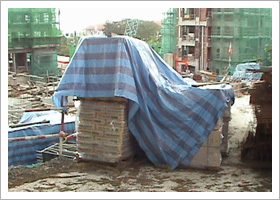
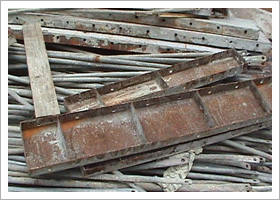
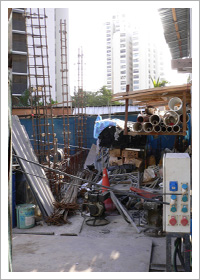
|
| |
2. water stagnation on uneven ground and concrete floor |
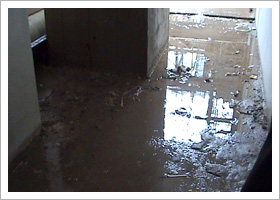
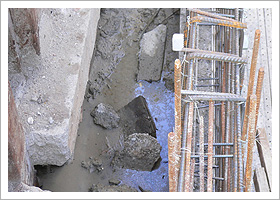
|
| |
3. water stagnation on demolition debris |
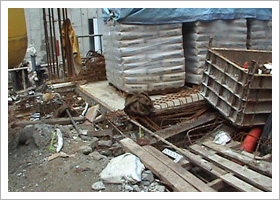
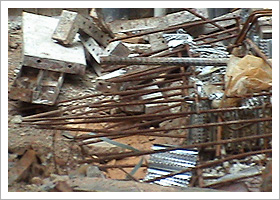
|
| |
4. water stagnation in storage tanks, drums and containers |
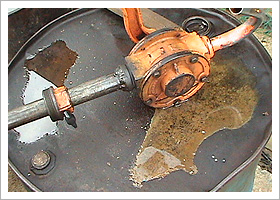
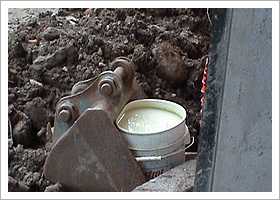
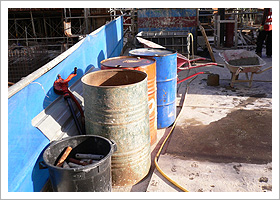
|
| |
5. accumulation of water in pits and traps, planter boxes |
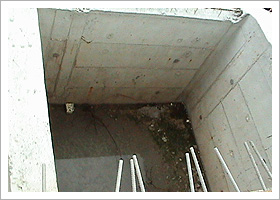 |
source: http://www.youtube.com/watch?v=wFfO7f8Vr9c&feature=related |
| |
Those found breeding mosquitoes for the first time may compound their offences for $1,000, and $2,000 for the second offence. For the third and subsequent offence, the case will be referred to the courts where they will be liable to be fined up to $10,000. |
|
| |
| |
| |
 Useful Info Useful Info |
|
 |
NEA RESEARCH ARTICLES
Bacillus thuringiensis var. istaelensis (Bti) for Mosquito Control at Construction Sites
Read more  |
|
 |
NEA RESEARCH ARTICLES
Research that backs the battle against dengue
Read more  |
|
 |
Potential mosquito breeding grounds at construction site
Read more  |
|
 |
|
|
| |
| |
|
| |
|
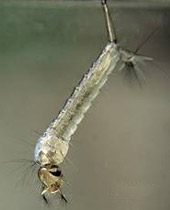 |
|
mosquito larvae are brown, black or gray and have a breathing tube on their tail.
The mosquito goes through four stages during its life cycle: egg, larva, pupa, and adult. The eggs normally hatch into Larvae within 48 hours. Larvae must live in water from 7 to 14 days depending on the water temperature. During this time, the larva molts 3 times and grows to almost 1 cm. After the larva molts the fourth time it becomes a pupa. The pupa is lighter than the water and floats on the surface. The pupa does not eat. In 1 to 4 days, the adult Mosquito comes out of the pupa. It rests on the surface of the water until its body dries and hardens enough to fly away.
Habitat: Larvae live in still water
Size: Larvae 5 to 13 mm, adults 1 to 1.5 cm |
|
|
|
| |
 |
| |
|
Reduce mosquito annoyance in your construction site and the risk of mosquito-borne disease by eliminating sites at external of the construction area that serve as habitat for mosquito larvae. All mosquito larvae need standing water to develop. As little as one-half inch of water in a discarded can or container will support dozens of mosquitoes.
As the mosquitoes have to breed in water, it is more effective and efficient to control mosquito at source at its aquatic stage. Pesticide should only be used for killing of mosquito in its breeding place or preventing its breeding if the breeding sources or potential breeding grounds are inaccessible or could not be eliminated for the time being.
The followings must be noted for killing mosquito larvae:
- Larvicide (such as Abate 1% SG, Bacillus thuringiensis israeliensis (Bti), etc.) can be applied to stagnant water directly with dosage according to the label instructions.
- Higher than required concentration of larvicide or excessive amount of larvicidal oil would not give better result on killing the mosquito larvae.
- The pesticides used must have been registered with NEA.
- Depending on the product, larvicide may be applied weekly into the stagnant water until the water has been removed.
- Pesticide applicator should put on protective gears including face mask and rubber gloves during pesticide application.
Integrated pest management approach has to be adopted for the prevention and control of mosquito. Elimination of stagnant or/and slow running water is the fundamental and most effective mosquito prevention and control method. Application of chemical including pesticide should be the last resort and temporary measure for killing mosquito larvae. Space spraying against adult mosquitoes by using pesticide should only be carried out when there is an urgent need to reduce the number of adult mosquito such as preventing transmission of mosquito-borne diseases.
Bentz Jaz Singapore offer menu pricing for Pest control treatments to domestic clients, following the initial visits our entomologists send written reports highlighting the problematic area, stating the treatments carried out along with our recommendations for any making good work we feel is essential to offer a long term solution. We offer a full making good service and our report will have a cost to carry out this work.
The control strategy comprises:
- Early case detection and prompt treatment
- Entomological surveillance and mosquito control
- Regular territory-wide anti-mosquito campaigns to eliminate breeding sites and encourage community participation
- Community publicity efforts to educate the general public to adopt preventive measures
|
| |
 |
|
Bentacide 50EC
Bentacide 50EC is a pyrethroid formulation Cypermethrin suitable for use as a space-spray concentration. It is highly active against all public...
|
|
|
|
Grande Fogging Machine
The Grande is an amazingly versatile fogger and represents our latest fogger from our Celestia line.
|
|
|
|
Relief T
Relief T prevents emergence of adult mosquito from mosquito breeding sites.
|
|
|
|
Resigen
Resigen is a pyrethroid based formulation that control mosquitoes and flies both indoors and outdoors. This product may be used in domestic,...
|
|
|
|
Superhawk Fogging Machine
The Superhawk is the machine of choice by Health Ministry Professionals, Mosquito Control Departments and Disease Control Programs. Branded product...
|
|
|
|
| Current page : Page no 2 | | Go to page > 1 |
|
|
|


